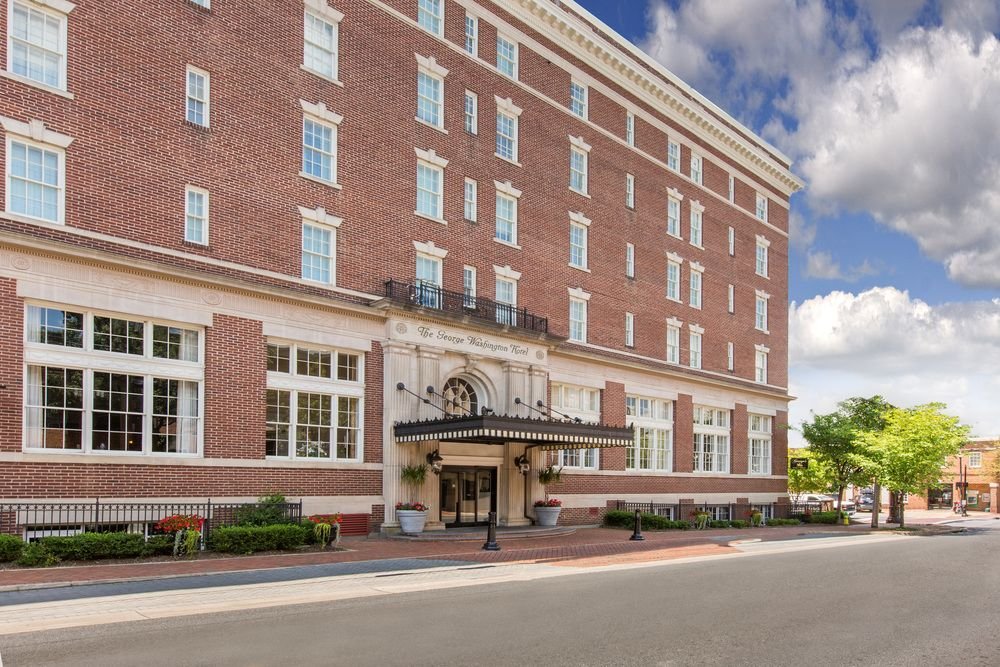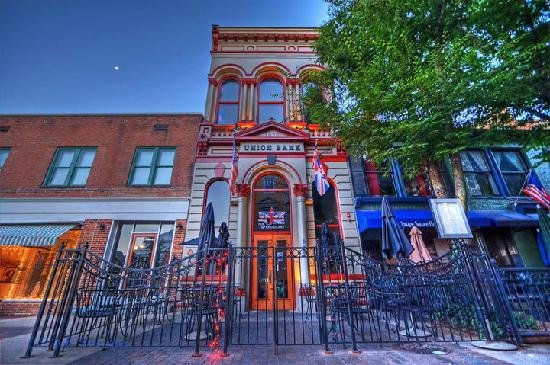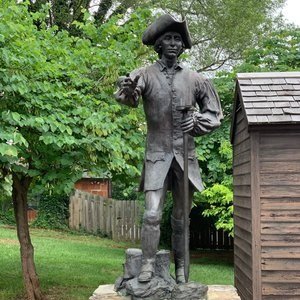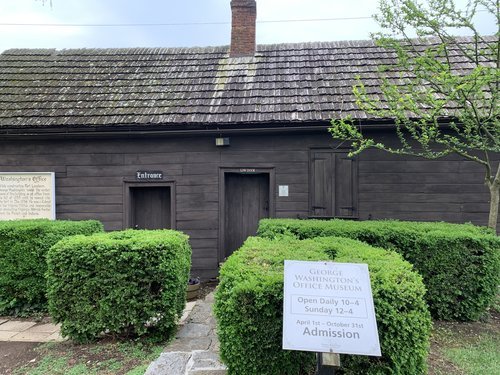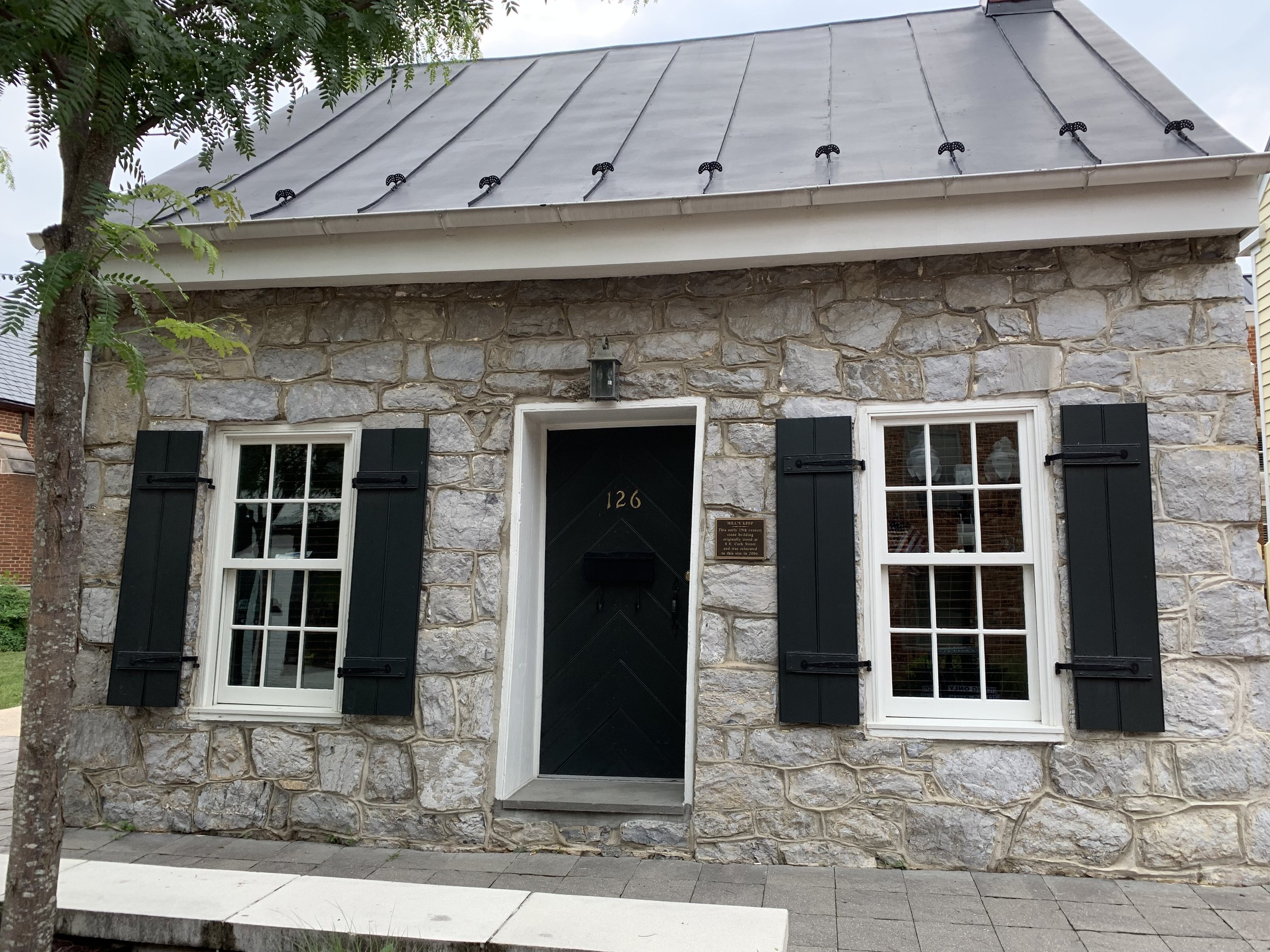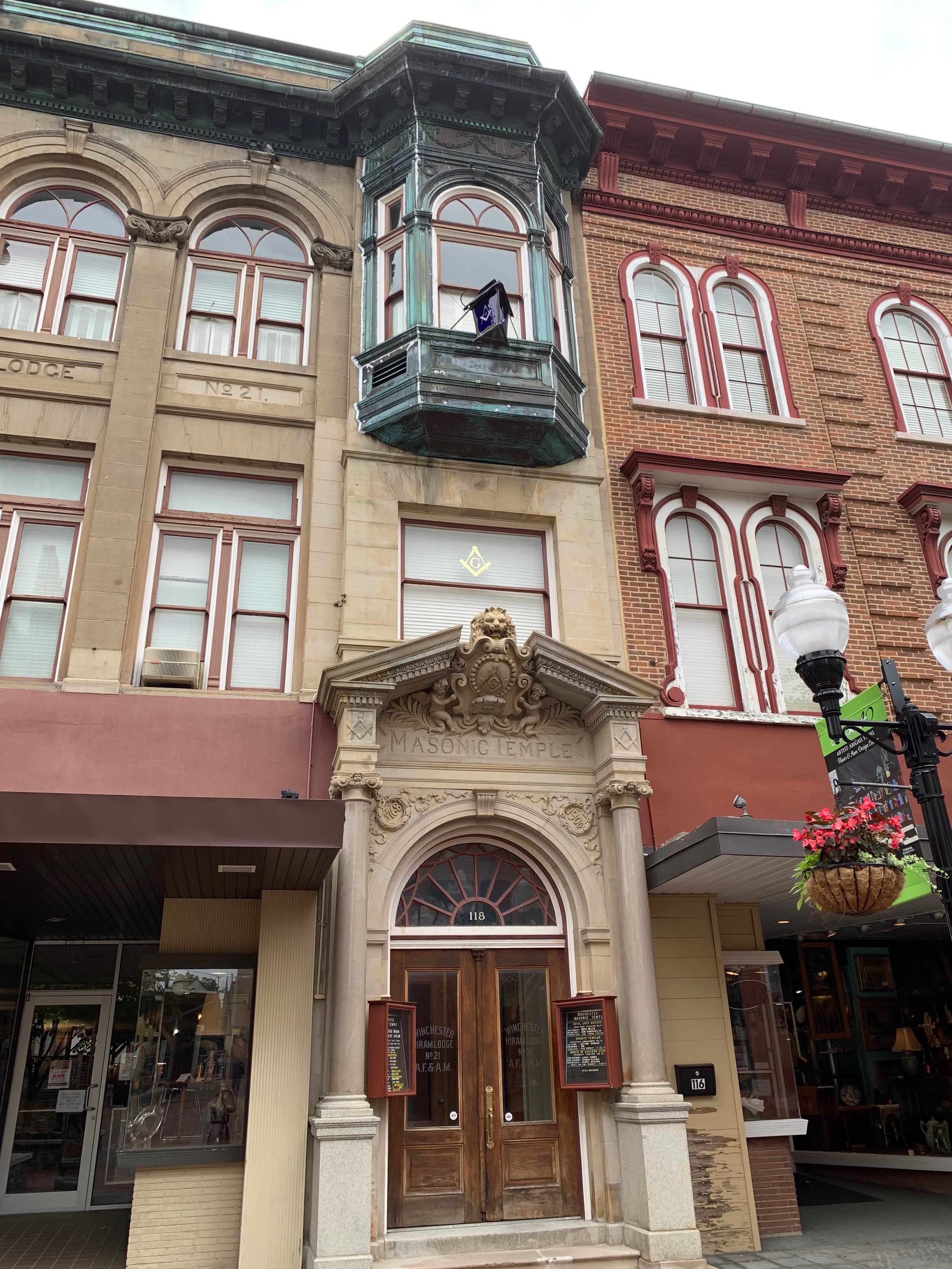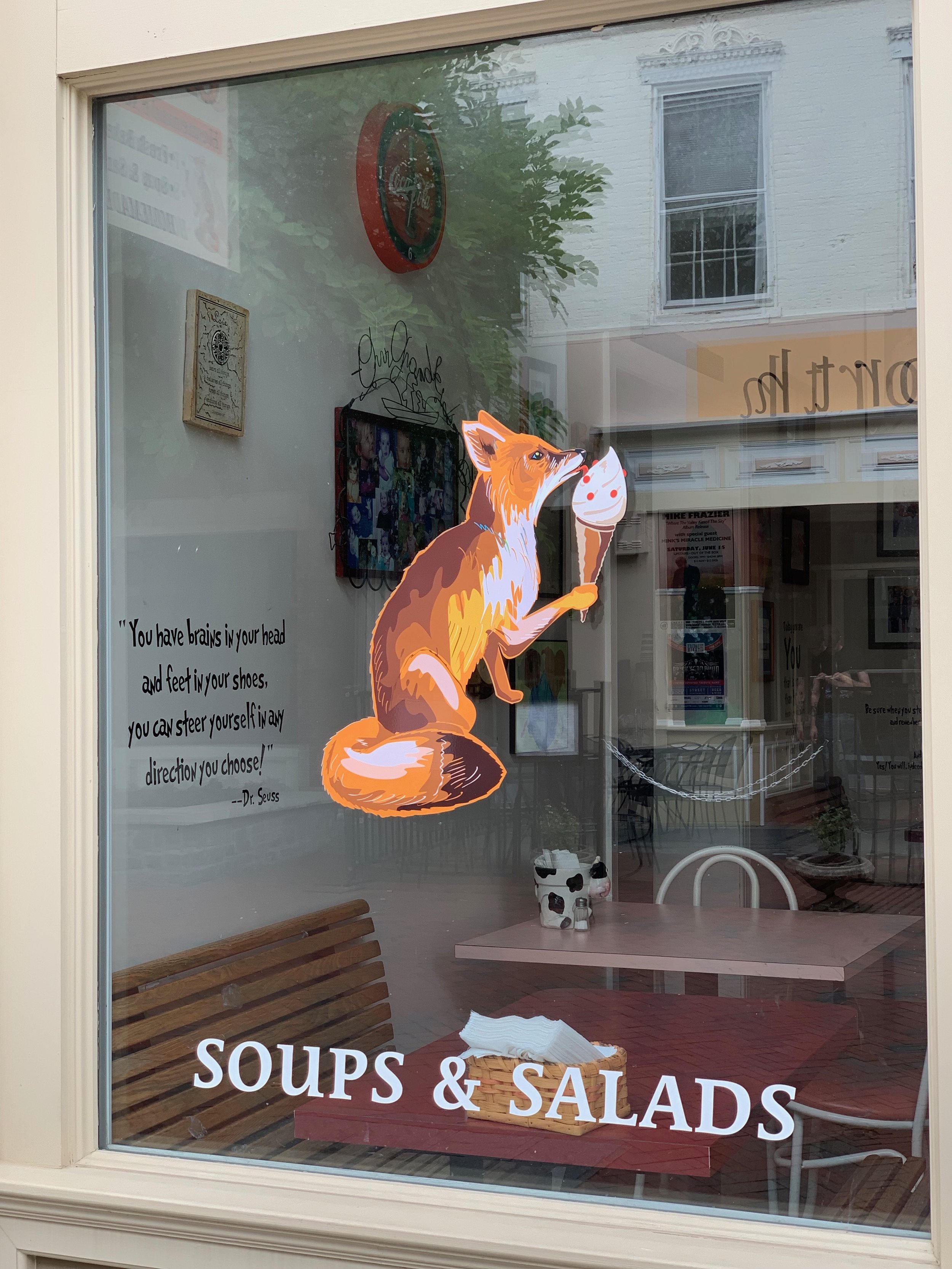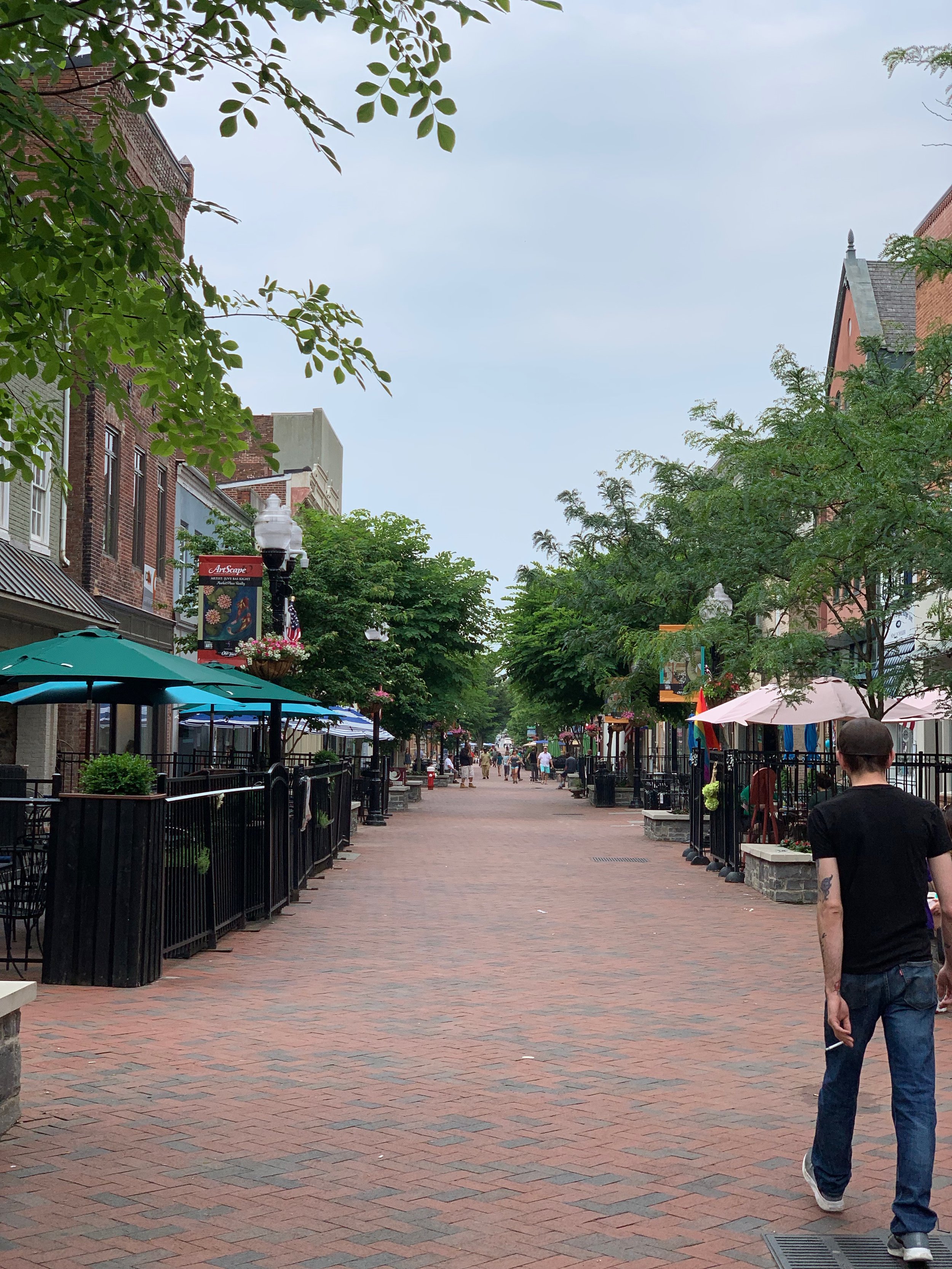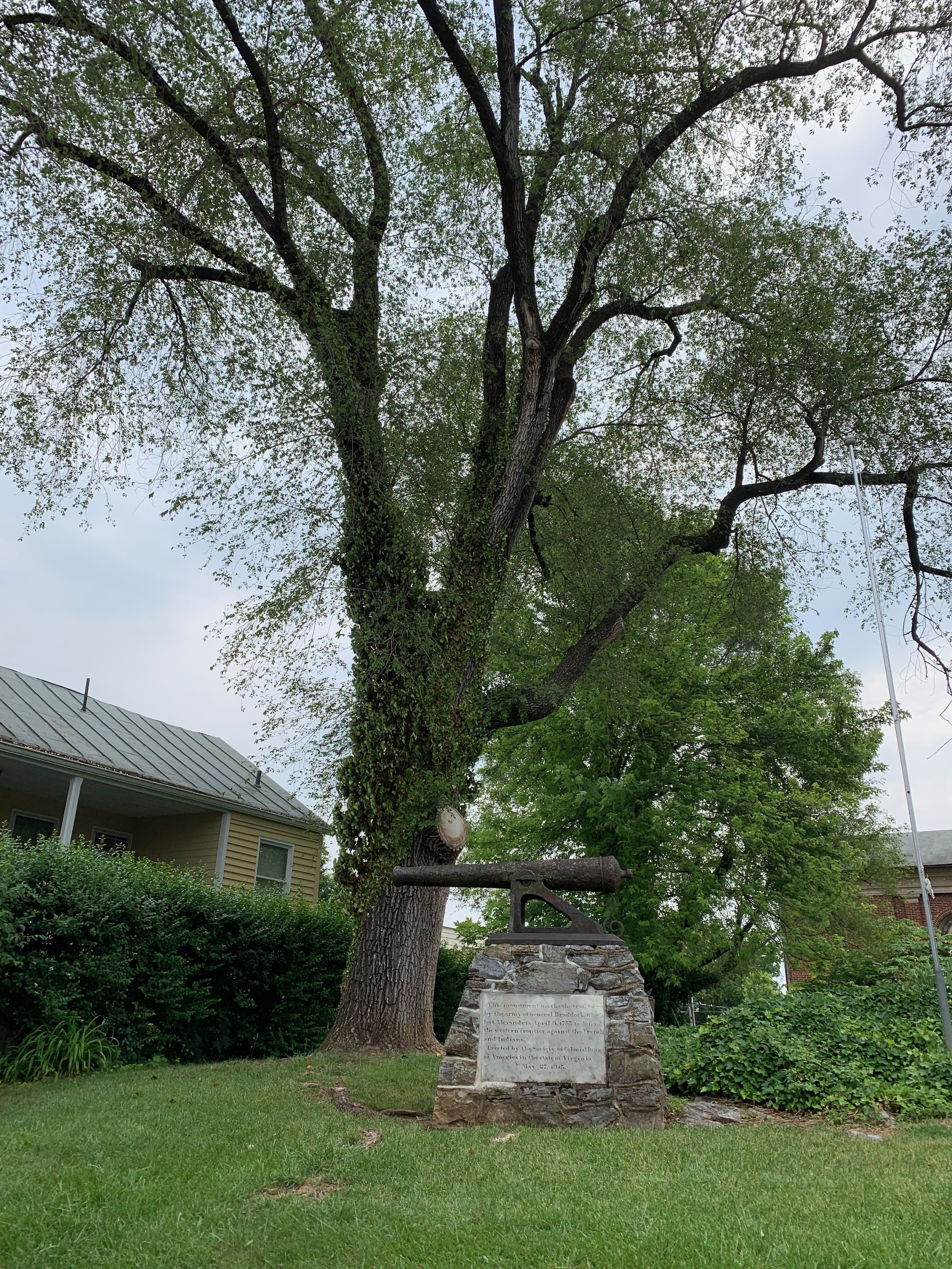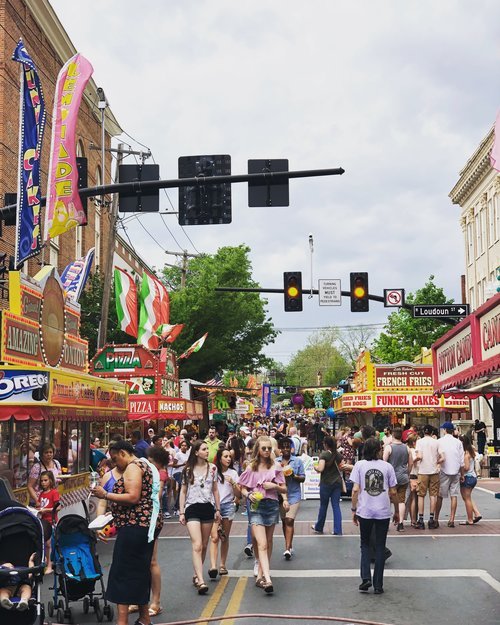Exploring Old Town Winchester, VA
Updated: April 6, 2024
Time needed in this town/city: 2 nights
In early June, I headed to a wedding in Winchester, Virginia - a small historic, Civil War-era town that has seemed to preserve itself into a visual “history book” of sorts… and I geeked out.
The below information is a complete guide of the best places to stay, the top rated places to dine and drink, and all there is to see and do. We’ve also included the best time of year to go, as well as a summary of the history of this quaint town!
Jump To
Where to Stay
The George Washington Hotel is the place to stay when you’re in Winchester as it’s smack in the middle of the historic district.
The Highlights
The rooms are large, comfortable, and affordable.
They have fantastic bar and dining options with a wide range of offerings, from about 7am - 10pm most nights.
They have a spa, offering massages and facials.
The indoor pool is designed to look like a Roman bath and is large enough to swim laps in.
They have a great fitness center.
They do have onsite parking, but they will automatically charge you $5 for parking there and hand you a tag. The lot is very small, so I parked in the garage next door and were refunded the money.
Other places to consider in old town
Where to Dine & Drink
Antica Trattoria
Generational Italian recipes are served in this quaint little restaurant!
Gringo Gordo Empañada Shop
Serving authentic, Argentine empanadas made-from-scratch. NOTE: They are NOT gluten-free.
Hideaway Café
Hideaway is the fun and quirky come-as-you are cafe serving top-tier espresso drinks, Winchester's beloved Old Town batch brew, fantastic teas, warm pastries, and more
Moe’s Donut Shop
This is one of the most talked about shops in Winchester, and it’s a tragedy that I couldn’t eat there (though if you are NOT Celiac, they do have some gluten-friendly options)! Moe’s Donuts offers freshly-made, totally customizable donuts and donut holes in a wide variety of flavors and styles. I brought back some for my mom as a “thank you” for watching my dog overnight. An hour later, I got a text saying they were gone!
Piccadilly’s Public House & Restaurant
Half a block from The George Washington Hotel is Piccadilly’s - the only day-to-late-night place where everyone goes to socialize, and I mean… everyone. It’s an expansive place that offers live bands on the outdoor patio, a DJ inside, and a back area for all-day/night dining.
I was there for the wedding after-party, so I didn’t try the menu. But, in observing others’ orders, it’s generous portions of pub-style food, though not very gluten-free-friendly.
Gluten-free rating: C
Roma Old Town Wood fired Pizzeria
Upbeat, casual spot for wood-fired pies, Greek/Italian specialties & rotating taps of craft beer.
Sabai Thai
Nothing-fancy, patio-equipped option serving traditional Thai eats such as curry & noodle dishes.
The Wine Room at Taylor Pavilion
Contemporary American cuisine with some International influence is offered in small plate style, allowing diners to mix, match, and share. There are also 70 wines by the glass, available.
Tropical Island Coffee & Cafe
Jamaican dishes & smoothies in a colorful counter serve filled with art, plants & tchotchkes.
Union Jack Pub & Restaurant
The appeal of going in there, versus all the other pubs on the street, was the building. In 1878, it was the Victorian Cast Iron Union Bank Building, eventually restored to be the pub. Remnants of the bank can be found throughout, which makes it a really cool experience.
Menu recommendations: Beyond Meat veggie burger with gluten-free bun (they will replace the fries with fresh vegetables) and the Union Jack prime rib dip.
Gluten-free rating: A+
Village Square Restaurant
New American dining with a full bar in the rustic, intimate environs of a historic building.
Violino Ristorante
Fare from Northern Italy is served in a cozy, simply decorated room with a leafy patio on the plaza.
Things to See & Do
Abram’s Delight
Built in 1754, Abram’s Delight is the oldest house in the city. It was owned by the Hollingsworth family for almost 200 years and is typical of the Shenandoah Valley architecture of the Scotch-Irish settlers. The property was added to the Virginia Landmarks Register (VLR) in 1972 and the National Register of Historic Places (NRHP) in 1973. Abram's Delight currently serves as a historic house museum.
NOTE: It’s a 10-minute drive from downtown.
GEORGE WASHINGTON’S OFFICE
George Washington used a little log building as a military office, from September 1755 to December of 1756 while Fort Loudoun was being constructed at the north end of town. Winchester played an important role in George Washington’s early adult life as his military and political career began there. As a young man of 16, he came to the area to begin what he thought would be his life’s profession - surveying. With the earnings from his surveying business, he was able to buy a number of acres around Frederick County and also a lot in the town that enabled him to serve as a Burgess from Frederick County 1758-1765. During the French and Indian War, he commanded the Virginia Regiment from his headquarters in Winchester.
Hill’s Keep
Note much is found about this building, other than it was a 19th century stone building that was moved to its current site in 2004.
Hiram Masonic Temple #21
On October 1, 1768, the Provincial Grand Lodge of Pennsylvania granted a charter to a number of Masons living in or near Winchester, to form a Lodge, to be known as “Winchester Lodge No. 12”. This was the first Masonic Lodge established west of the Blue Ridge Mountains, and the first in Virginia to be designated by a number. The charter named three members who were to be the Station Officers of the Lodge but at the first meeting there, four members were present. By the outbreak of the Revolutionary War, the Lodge had 21 members.
In December 1777, due to lack of attendance, meetings were suspended until February 2, 1785, when four members met to resume work in the Lodge. Of the 21 former members, six had been killed or died of disease contracted in military service. These are now commemorated by a bronze tablet to the left of the entrance to the anteroom of the Lodge. Ten others had moved to other localities, and one had died. The Charter from the Provincial Grand Lodge was exchanged for one from the Grand Lodge of Pennsylvania. However, it was not until December 1807 that Winchester Lodge No. 12 became Winchester Hiram Lodge No. 21 under the jurisdiction of the Grand Lodge of Virginia.
The first meetings were held at John Sexton’s Tavern, later at various places. In 1809, when the community wished to build a market house, the Lodge assisted financially in the project and had a room in the building for its use. In 1821, the old Market House was razed and a new Market House built. The Lodge again assisted and secured a room in the new structure.
Between 1861 and 1865, the Lodge raised 231 Candidates, 207 of them from the occupying army. As the army was using the Market House, these meetings were held at 172 North Loudoun Street. The building was razed several years ago and the land converted into a parking lot by the Commercial and Savings Bank.
In 1865, with the coming of peace, Winchester Hiram Lodge had over $4,000 in its treasury. At first, it was planed to enlarge the room over the Market House, and negotiations were started with the Common Council with this in view. Although the Council was willing to agree to this, the Lodge changed its mind and purchased its present site. The cornerstone of the building was laid May 29, 1867, and the Temple was dedicated July 22, 1868, missing by less than three months the centennial of the first charter of the Lodge.
MOUNT HEBRON CEMETERY
Mount Hebron Cemetery is comprised of:
1 1/4-acre section in its northwest corner - surrounds the old Reformed Church. It contains marked graves dating from 1769.
1 1/4 acres lying just north of Mount Hebron’s entrance - In its center stands the east wall, which is all that remains of the ancient limestone Lutheran Church, whose cornerstone was laid in 1764. This church building was not completed until 1793, and it burned in a spectacular blaze in 1854.
The earliest marked grave bears a date of 1777. By 1842, both the Lutheran and Reformed congregations had abandoned their old churches on the hill in favor of newer houses of worship they had just completed down in the town, but their burying grounds were not abandoned. In 1843, 12 citizens of Frederick County petitioned the General Assembly of Virginia to be chartered as a non-profit organization “to establish a public cemetery.” This charter was granted in February 1844.
Twenty-two years after the establishment of Mount Hebron Cemetery, a 4th contiguous burying ground was dedicated in 1866. Stonewall Cemetery is the last resting place for the bodies of 2,576 Confederate soldiers who died in the fields and hospitals of this locality. Handsome monuments have been erected there by various States and individuals, and every year since 1866, the graves are decorated and appropriate memorial ceremonies held.
Museum of the Shenandoah Valley
The Museum of the Shenandoah Valley does a great job of piquing the interest of its visitors with more obscure artifacts than many other museums would have. For example, there’s an old-style apple picker, a rack to bend wood for chair-making, distilling objects, weaving objects, and a beehive. There' are also displays of poison bottles, sugar cutters, copper stills, and so many other artifacts found all over the area.
In addition to this, a lush garden path takes you to the Glen Burnie mansion - the estate of the Glen Burnies, from the 1730s through the 1990s, and its final owner, Julian Wood Glass, Jr., was the founder of the museum.
Patsy Cline’s Childhood Home
Patsy Cline grew up in Winchester, Virginia, about 10 miles south of the West Virginia line along Route 50, and just off Interstate 81. Before she left for Nashville to seek her music career, she lived on South Kent Street, went to nearby Handley High School, and worked as a soda jerk at Gaunt’s Drugstore – all in and around downtown Winchester. Sadly, she died in a plane crash at 30 years old.
Her childhood home has been turned into a small museum, and the curators there can guide you to other “Patsy Cline highlights” in town. And, just a few miles south of the center of town, she is buried at Shenandoah Memorial Park. There, her fans and admirers have erected a giant bell tower to commemorate her.
STONEWALL JACKSON’S HEADQUARTERS
The Gothic Revival style house was built in 1854 by local dentist, William McP. Fuller, who named it "Alta Vista" for its scenic view over open hillsides, facing east across Winchester. Fuller sold it in 1856 to Lieutenant Colonel Lewis Tilghman Moore, Commander of the 31st Virginia Militia. Later, while commanding the 4th Virginia Infantry in the Confederate States Army, Moore offered his home to serve as the headquarters for Major General Thomas J. "Stonewall" Jackson. Jackson moved into the house in November 1861, shortly after taking command of the Valley District of the Department of Northern Virginia. Jackson was joined by his wife, Mary Anna, in December 1861. From this house, Jackson planned his Shenandoah Valley defenses and campaigns, starting with the Romney Expedition. The Jacksons lived in the house until March 1862, when the general left Winchester to begin his Valley Campaign.
While living here, the Jacksons became very fond of the people and culture of Winchester, and referred to it as their "winter home", hoping to settle here after the Civil War.
In the 1960s, the home was purchased and converted into a museum, and includes many possessions and artifacts belonging to Jackson. One of Colonel Moore's descendants is the actress, Mary Tyler Moore, who helped to pay for the restorations of the home to become a museum – including replica wallpaper matching the original.
WANDERING THE TOWN
Winchester, alone, is home to 1,116 buildings, dating anywhere from the late 1700s to the mid-90s, which means you can walk down one block of Piccadilly, alone, and feel like you’ve time traveled at least 100 years. It brings an almost “magical” quality to your visit.
When to Go
There are two great times of year to go, though one requires far-in-advance booking! The first is the last week in April for the Shenandoah Apple Blossom Festival. For nine days, thousands of people gather from all over to enjoy parades, live music, fairs, shopping discounts, and so much more! It’s recommended for people of all ages, though just be mindful of the crowds. The second is the fall, particularly around the first and second week of October when the leaves change colors. It’s an incredible drive through the mountains and definitely gives an even more magical feel to the town as you explore it!
A History Summary
17th century - The land is mostly controlled by the Iroquoian people.
1606 - 1632 - French Jesuits entered the valley, and the explorer Samuel de Champlain made a crude map of the area.
1671 - The Shawnee were contesting with the Iroquoians for control of the valley and were losing.
1705 - The Swiss explorer Louise Michel did more extensive surveying and mapping of the area.
1716 - Governor Alexander Spotswood did more extensive mapping and surveying of the area.
Late 1720s - Governor William Gooch promoted settlement by issuing large land grants. Robert "King" Carter, manager of the Lord Fairfax proprietorship, acquired 200,000 acres.
1729 - Anglo-European settlers arrived in the Shenandoah Valley, and the Shawnee were now the principal occupants. During the first decade of white settlement, the valley was also a conduit and battleground in a bloody intertribal war between the Seneca and allied Algonquian-speaking Lenape from the north, and their distant traditional enemies, the Siouan Catawba, based in the Carolinas. It’s also when Quakers started to settle in the area.
1732 - 1736 - Though Virginia was an Anglican colony, Governor William Gooch had a tolerant policy on religion. The availability of land grants brought in many religious families, who were often given 50-acre plots through the sponsorship of fellow-religious grant purchasers and speculators. As a result, the Winchester area became home to some of the oldest Presbyterian, Quaker, Lutheran and Anglican churches in the valley.
1732 - The first German and Scots-Irish settlers appeared.
1738 - What is now Winchester was originally named “Frederick Town” in this year.
1744 - The Iroquois Six Nations finally ceded their nominal claim to the Shenandoah Valley at the Treaty of Lancaster, arranged by British officials. The treaty also established the right of colonists to use the Indian Road through the valley, later known as the “Great Wagon Road”.
1750s - George Washington spent a good deal of this decade doing land surveys for Lord Fairfax.
1752 - The Virginia House of Burgesses granted the fourth city charter in Virginia to 'Winchester' as “Frederick Town” was renamed after Colonel Wood's birthplace in England.
1753 - On the eve of the French and Indian War (Seven Years' War), messengers came to the Shawnee from tribes further west, inviting them to leave the Valley and cross the Alleghenies, which they did the following year.
1754 - Abraham Hollingsworth built the local residence called Abram's Delight, which served as the first local Quaker meeting house.
1756 - George Washington (now a Colonel) began designed and building Fort Loudon. A jail was also built to mostly hold war-protesting Quakers.
1758 - George Washington was elected to the House of Burgesses.
1775 - French and Indian War veteran, Daniel Morgan, raised a company of militia to support General George Washington's efforts during the Siege of Boston. He led the 96 men of "Morgan's Sharpshooters", from Winchester, on July 14, 1775, and marched to Boston in 21 days.
1862 - 1864 - Five battles took place in Winchester and another three right outside the city.
Early 1900s - Winchester was the first city south of the Potomac River to install electric light.
1917 - The Winchester and Western Railroad connected Winchester with Rock Enon Springs, moving both vacationers and supplies to the resort that is now Camp Rock Enon, with far greater speed.
1970s and beyond - The area continued to modernize, as well as restore as much history as possible to the town.
